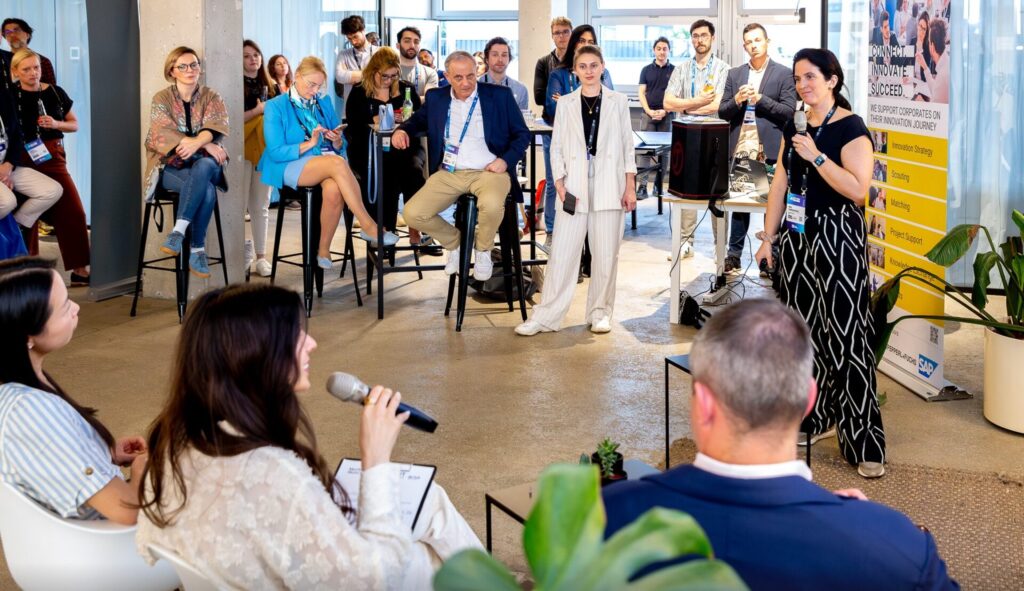
Michael Joe Cini
12th October 2022
Developing universal vaccines with computational technology
In the conventional process of developing vaccines, antibodies are generated using a single antigen species. When an animal model is used to generate antibodies to a present viral strain, then the subject has to be injected multiple times to generate certain antibodies when there’s a mutant of the same virus. Since viruses can rapidly undergo mutation, it is seemingly impossible to catch up with the speed using the traditional animal model method. Universal vaccines have the potential to fix this issue, with AI easing their development.
Challenges in the development of Universal Vaccines and how AI offers to help
Universal Vaccines are a perfect way to prevent future pandemics and to control the rapidly changing Coronavirus causing a lasting pandemic. However, it is very hard to develop universal vaccines through traditional methods. To hasten the process of universal vaccine development, scientists are looking to leverage AI and integrate protein science in universal protein vaccine design.

AI technologies can carry out simple medical tests without human assistance, and make diagnosis faster and more accurately, using historical medical data and patient records. Al algorithm improves hospital operations by using environmental and medical factors to predict patient behaviour and disease probabilities. However, little has been said about the technology functioning in the development of vaccines.
Storing information in the form of computational technology might be significantly helpful in collaborative experiments. All strengths discovered from the beginning of the pandemic to the time of introducing this advanced method might be computed in an AI-based technology. This results in a faster generation of antibodies that target different strengths. Also, the algorithm can be used to identify a common feature among all the mutant strains in order to generate an antibody to prevent future strains.
In support of this, Dr Lurong Pan, founder and CEO of Ainnocence, said in an interview with NewsMedical, “If we can completely digitalize the virus, we could build an algorithm to find its evolutionary pattern and find a common immunogenetic sequence to contribute to the vaccine design process. Computational technology could speed up design and even help discover new phenomena in biology in the future”
Viruses, by nature, can change forms and escape a previously established immunity. For example, the COVID virus constantly undergoes mutation, producing new variants, and forcing already vaccinated people to be re-vaccinated since the previous vaccines do not cover for the new variants. This has spurred scientists into action, actively seeking to create a vaccine that will provide broad efficacy against various strains of a virus and continually protect against any new variants of the virus that may emerge – Universal vaccines.
The influenza virus has been a major focus for the development of a universal vaccine. This was necessitated after studies show that traditional influenza vaccine efficacy varies against different viral strains. It was also noted that traditional vaccine potency varies with age groups. Universal vaccines, on the other hand, are more efficacious. They provide better and faster production and reduce the cost of vaccine research and development (R&D), manufacturing, and stockpiling. Specifically, the universal influenza vaccine provides long-lasting immunity and is able to prevent infection by genetically drifted strains of influenza, thus dramatically reducing influenza-related morbidity and mortality.
The possible mechanisms behind universal vaccines
Generally, vaccines are administered prophylactically or therapeutically. Most of the vaccines on the Expanded Programme on Immunisation (EPI) schedule are for preventive purposes. Some are single doses and confer lifelong immunity while some are only protective for a while. Whichever one, preventive vaccines generate B cell immunity that has a longer memory in our immune system. Currently, scientists are observing certain antibodies that can target multiple viral infections. If through their experimental and computational measures, a universal antigen is found, then a universal preventive vaccine that generates a long-term protective B cell immunity could be produced.
T-cell immunity is another component of our immune system. It functions mostly therapeutically, to clear out an already present invader. T cells differentiate into helper T cells, memory T cells, regulatory T cells, or cytotoxic T cells. This signifies the diversity and variation in strength and among people – some may have compromised T cell immunity while some have overexcited T cell immunity, causing an inflammatory response. However, if researchers could come up with a solution that could act to stimulate T cells to protect the body, clear out invaders, and at the same time not hurt the body. Such a modulator would also be classified as a universal vaccine.
Also, researchers are now focusing on immunodominance, the ever-mutating domain of the virus rather than the unchanged part of the virus (conserved region). The goal is to make chimeric protein vaccines and render the conservative region more immunodominant, thus improving the range and durability of the immune response.
TAKE PART IN MED-TECH WORLD 2022
It is now estimated that the global digital health market will increase to around $640 billion by 2026. Through our expertise coupled with optimized networking, we will ensure that both investors and startups are on the ground floor of this health revolution. The event which is organized and curated alongside a team of doctors, attracts legislators and policymakers, medical professionals, and investors from across the world, addresses the opportunities and challenges driving this million-dollar forum.






